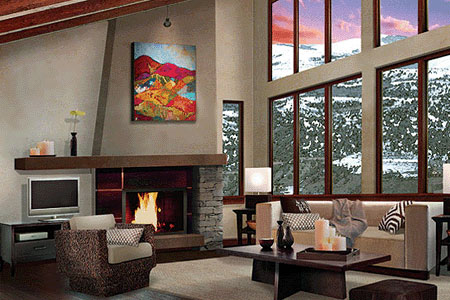
Space planning is a crucial skill inherent to good home staging. In any interior, the space must be lovely and functional. In order to be both things, planning must be done in order to figure out how the space will best be used and how to make it look beautiful in the process.
Understanding that staging is both an aesthetic and functional enhancement process is important for all professionals working in the industry. If you can make a home look great, but cause it to be dysfunctional, then potential buyers will see right through the surface improvements and walk away. Similarly, if the space is functional, but unaesthetic, buyers will say “Too bad, it serves us great, but it is just too ugly”.
This post provides a background on space planning during real estate staging.
Space Planning Defined
All spaces within a property should be planned, then executed. Without a plan, the space will still come together, but not in the most functional or beautiful way possible. Taking time to plan is important in so many aspects of home staging, starting from a business plan and going straight through a retirement plan! Of course, planning will be a vital aspect of every staging job you perform throughout your entire career.
Planning involves looking at the space objectively and figuring out what can be done to optimize it for best functional and appearance. A bit of planning can go a long way towards solving problems before they occur. For stagers who do not plan adequately, there are always issues with size, color and proportion which must now be overcome with some manner of compromise. When you are staging a property to sell for highest profit and shortest timeline, there really is no room for any compromise, especially when you are being paid to do the job right!
Interior and Exterior Property Planning
The interior of the home is not the only part that must be planned out in advance of actually performing any staging enhancements. The exterior must also be carefully considered, since this is the first thing that prospective buyers will see.
If the curb appeal is not appealing, then many buyers will not even bother to come inside to see the rest. In fact, if the exterior is not functional and beautiful, most will not even schedule appointments to see the home, since it will be eliminated due to the listing photos… This is the definition of utter failure for a home stager!
Make sure to attend to all areas of the home and always consider function and form equally. People want their new property to work for their needs and look great doing it. They are spending a tremendous amount of money to get everything they want, so it is rare that a buyer will accept anything less than their ideal vision of a perfect home.
Space Planning Strategies
Here are some of my personal tips for perfect space planning. IF you can start with an empty home, you will have an advantage. Photograph the space and then plan it from scratch to make the most of its positive attributes, while downplaying any negative attributes.
If you must work with the present décor, consider rearranging things as need to improve the look, feel and flow of the home. The current owner will have to accept some compromise if they want to sell the property, so do what you can with what you have available.
Be especially careful with your measurements, color choices and design sensibilities. Remember, you are not staging to make yourself happy, or even to please your client’s design sense. You are staging to market the home and get it sold.. Make this a priority by creating universal appeal in every detail.
Always consider how a design will actually work. Problem solve in advance of actually staging. Always keep the target buyer demographic in mind. If you are staging to empty nesters, remember how they live and the health issues they are possibly dealing with. If you are staging to a young family, then always keep everything kid-friendly to avoid big issues.
Planning goes a long way in preventing problems. As a professional stager, you do not want problems. You want sales, referrals and a successful business. Take your time in the design phase and you will soon gain the skills to recognize and prevent problematic issues well in advance of the first prospective buyer asking through the door!



